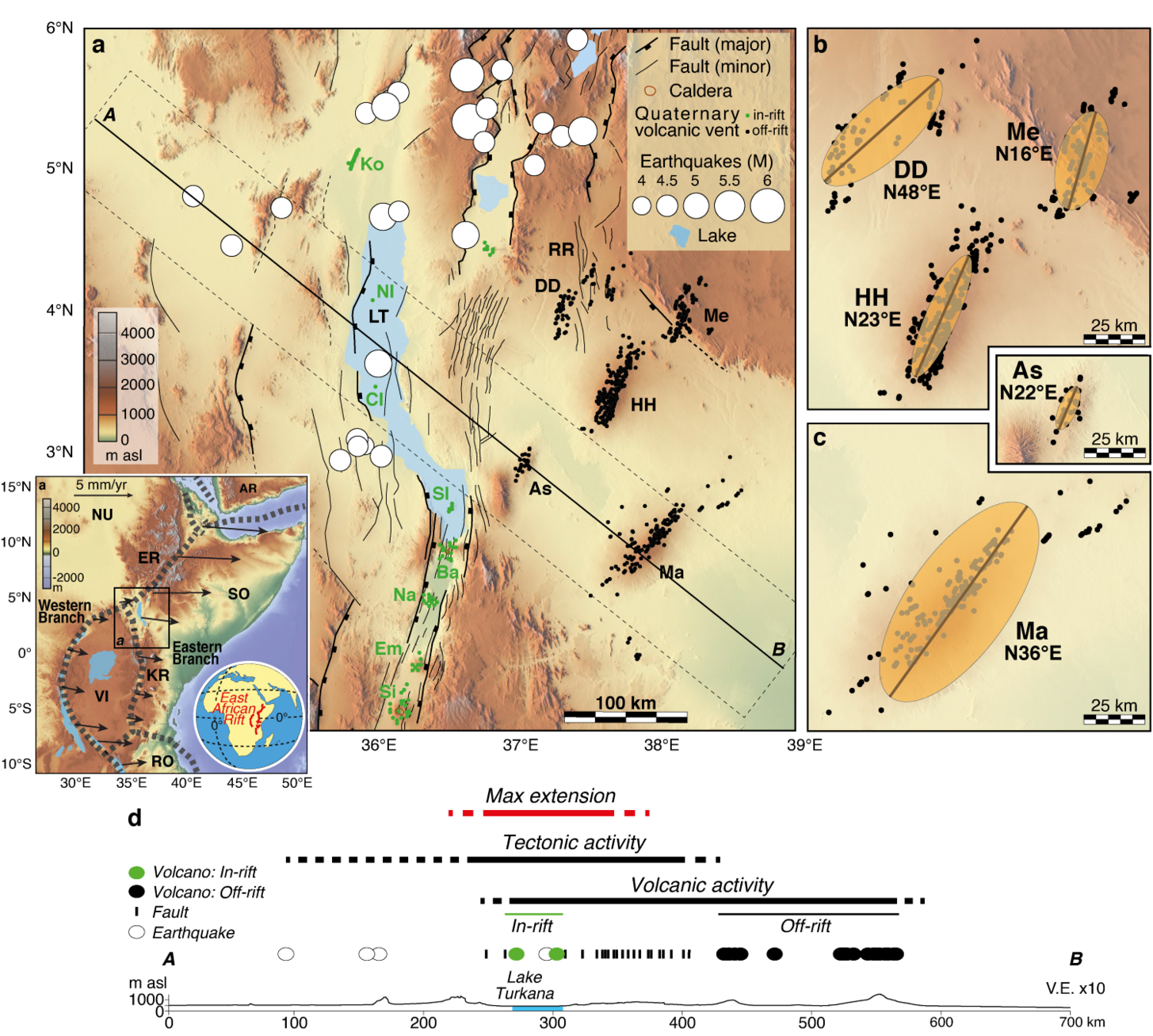New evidences for the distribution of volcanism during continental rifting

The distribution of volcanic activity in continental rifts is normally controlled by an interaction between the regional extensional stresses imposed by plate motion and several factors, such as structural inheritance, volcano edifice loading, and rift architecture. These interactions result in complex characteristics of rift-related volcanic features, which may be difficult to interpret considering the different controlling processes. The Turkana Depression (East Africa) exemplifies these complexities, showing an anomalous location of volcanic fields (outside the area of ongoing extension), with variable vent orientation. In a recent work published on Geophysical Research Letters, a research team led by the Institute of Geosciences and Earth Resources has analysed the distribution and alignment of volcanic vents in this region and calculated the stresses resulting from variations in topography and crustal thickness (the so-called Gravitational Potential Energy, GPE). The results of this study show that West to East variations in elevation and (subordinately) crustal thickness give rise to extensional GPE-related stresses East of Lake Turkana, where recent off-rift volcanism is localized. Within each different volcanic field, local GPE-related stresses control the arrangement of volcanic vents, which therefore do not respond to the regional (plate motion-driven) stress field. Overall, these results offer significant insights into rift-related volcanism, highlighting the fundamental role played by the Gravitational Potential Energy in controlling the large- to local-scale distribution of volcanism during rifting.
Reference
Corti G., Muluneh A., Stamps D.S., Keir D., Isola I., Mazzarini F., Brune S., Maestrelli D. (2025). Control of gravitational potential energy on the distribution of off-rift volcanic activity in the Turkana Depression, East African Rift. Geophysical Research Letters, 52, e2024GL114277. https://doi.org/10.1029/2024GL114277.
For information: Giacomo Corti, CNR-IGG (giacomo.corti@cnr.it).